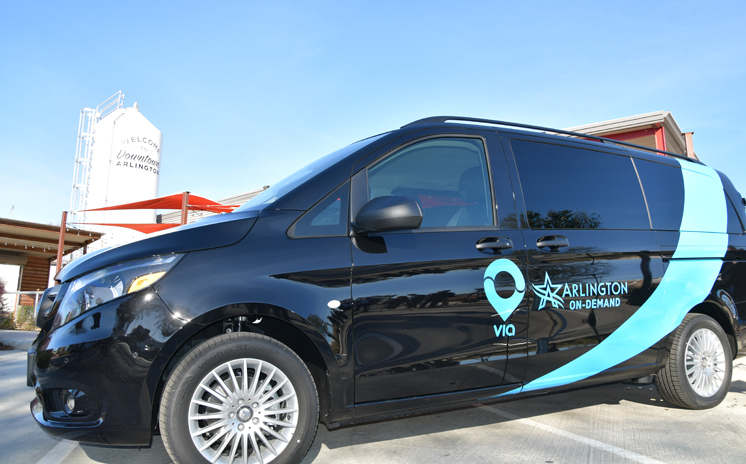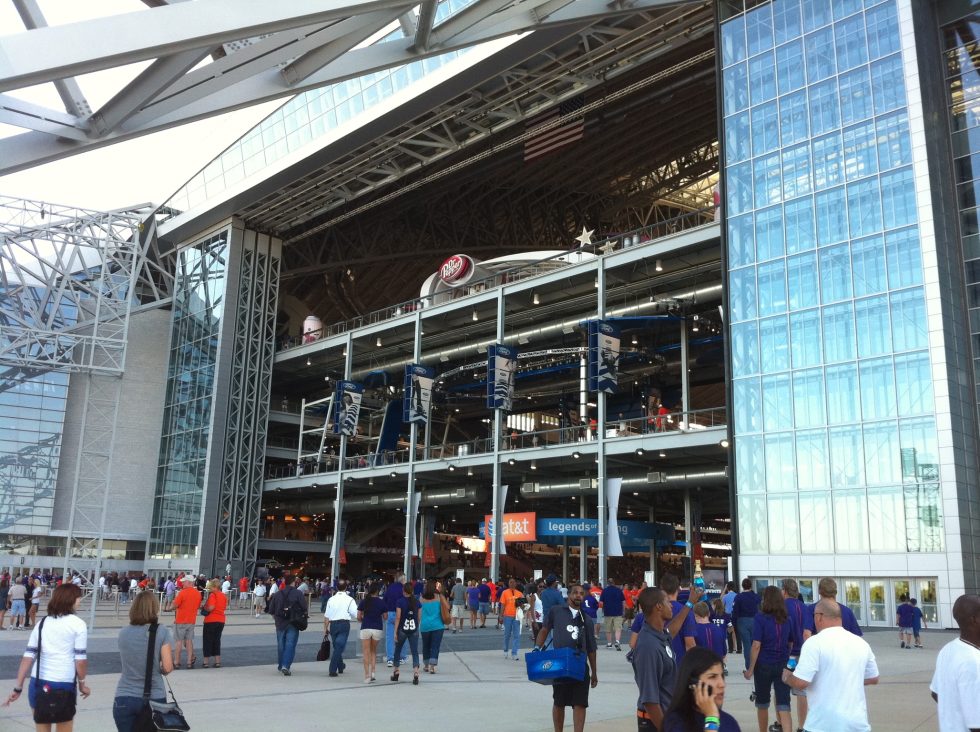Arlington, Texas, has the dubious distinction of being the largest American city without a conventional bus system. Sandwiched between Dallas and Fort Worth, the town of nearly 400,000 people launched a single bus line called the MAX in 2013—but even that got shut down last year.
But just as some developing countries have leapfrogged past landline telephones in favor of cellular technology, Arlington is trying to turn its status as a mass-transit laggard into an advantage by embracing cutting-edge transportation technologies.
Last week, the city announced a new partnership with the self-driving car startup Drive.ai. Starting in October, free Drive.ai shuttles will circulate on public streets in Arlington's Entertainment District, past a Six Flags amusement park and the stadiums where the Dallas Cowboys and Texas Rangers play.
At the same time, Arlington is sponsoring a human-driven on-demand service operated by Via, a competitor to Uber and Lyft that focuses on shared rides. Residents in a portion of Arlington can use an app to take $3 rides anywhere in the service area, which includes Arlington's major stadiums and Six Flags, as well as the University of Texas at Arlington, city hall, and at least three high schools.
Together, these two projects point toward a radically different vision for public transportation in the 21st century. Rather than having full-size city buses with fixed routes and schedules, Via's service uses six-passenger Mercedes vans to offer on-demand, nearly door-to-door service. Right now, Via's service is heavily subsidized. But self-driving technology could help to bring down these costs, making fares of $3 per ride—or even less—economically viable.
Arlington is positioning itself to become one of the first cities in America to offer this kind of service city-wide. But the city isn't there yet. The self-driving technology pilot with Drive.ai is tiny—just three vehicles—and it still has safety drivers behind the wheel. Still, the city has big plans for the future. Arlington is already planning to expand its human-driven Via service to cover more of the city. And in the long run, it's easy to imagine these two pilot projects converging to produce a city-wide on-demand service using shared self-driving vans.
If Arlington's experiment is successful, it could challenge other cities to re-think public transit for a driverless era. The largest cities will probably always need full-sized city buses on major routes, because otherwise their streets will become too congested. But in smaller cities, on less popular routes, and at off-peak times, a network of shared, on-demand self-driving vans might be able to provide a better experience than an old-fashioned city bus can.
Via replaced a short-lived bus route

In 2013, Arlington temporarily lost its title as the largest city without a mass transit system when the city launched a bus line called the Metro ArlingtonXpress—MAX for short. But the route only attracted about 300 riders per day, so the city called it quits in 2017 and signed a contract with Via instead.
From the rider's perspective, the Via service bears a striking resemblance to Uber and Lyft. A rider launches the Via smartphone app and indicates the pickup and dropoff locations. The app then indicates a pickup time—typical waits range from 3 to 12 minutes, according to riders we talked to—and the app shows the car's progress as it makes its way to the rider's location.
Via shuttles don't travel along fixed routes like a conventional bus. But Via's algorithms try to assemble dynamic "routes" by grouping together passengers traveling in the same direction along roughly the same route.
Whereas Lyft Line and Uber Pool pick passengers up in front of their homes, Via often asks passengers to walk to a nearby street corner. This helps the vehicle stay on schedule as it picks up multiple passengers along a relatively straight route. According to passengers who have tried Via's service, pickup spots are usually less than a block from the requested departure point.
Via also operates on-demand shuttle services in the New York, Chicago, and Washington, DC, areas. But where Via's service in those cities are run entirely with private money, the Arlington service is supported with taxpayer dollars.
Via is pursuing similar deals elsewhere, including a service it recently launched in West Sacramento, California. The company says it has similar deals in the works with several other cities.
Riders like Arlingtons Via service

"The fleet they're using are these really nice Mercedes," Arlington resident Dieter Scholtyssek told Ars. "They're really clean, and the drivers have been pretty friendly."
"It's a lot better than having nothing, which is what Arlington used to have," said Matt Yaquinto, another Arlington Via rider.
Both men told Ars that they used the service to go to sporting events in Arlington's Entertainment District—though Scholtyssek noted that some games end after 9pm, which is when Via shuts down for the night.
Not every Arlington rider was happy with the switch to Via, however. Bud Davis is a Fort Worth resident who regularly traveled to Arlington during the days of the MAX bus, first taking a commuter rail train before switching to the MAX. Under the old system, he could buy an unlimited-ride day pass that allowed him to complete a round trip to and from Arlington for just $5. Today, he still has to pay $5 to ride the train, and then he must pay another $3 each way for the Via—more than doubling the cost of his trip.
Davis also told Ars that when he gets off the train, he often finds that the wait time for a Via vehicle is 10 minutes or more—longer than an Uber or Lyft car. So he has generally opted for a conventional ride-hail car instead.
[contf] [contfnew] 
Ars Technica
[contfnewc] [contfnewc]







